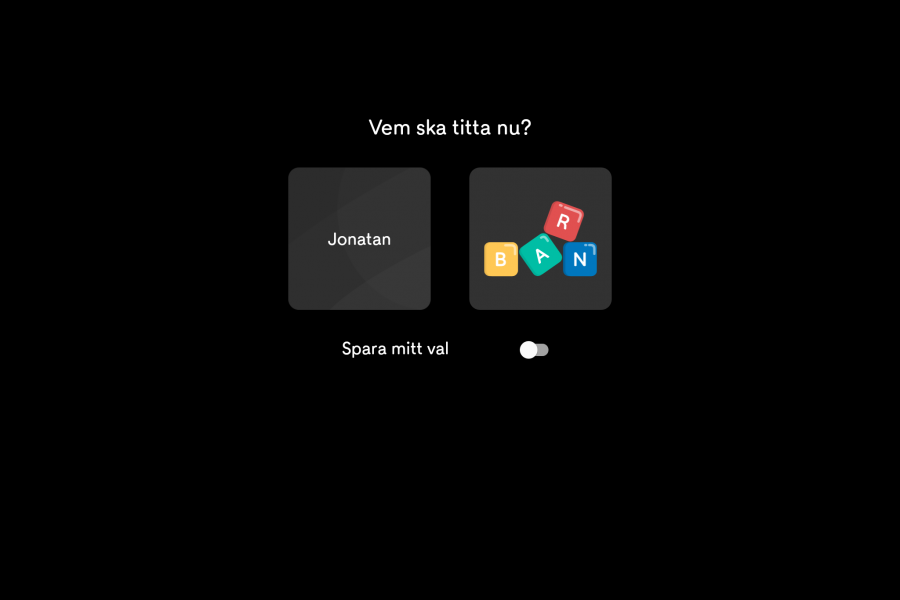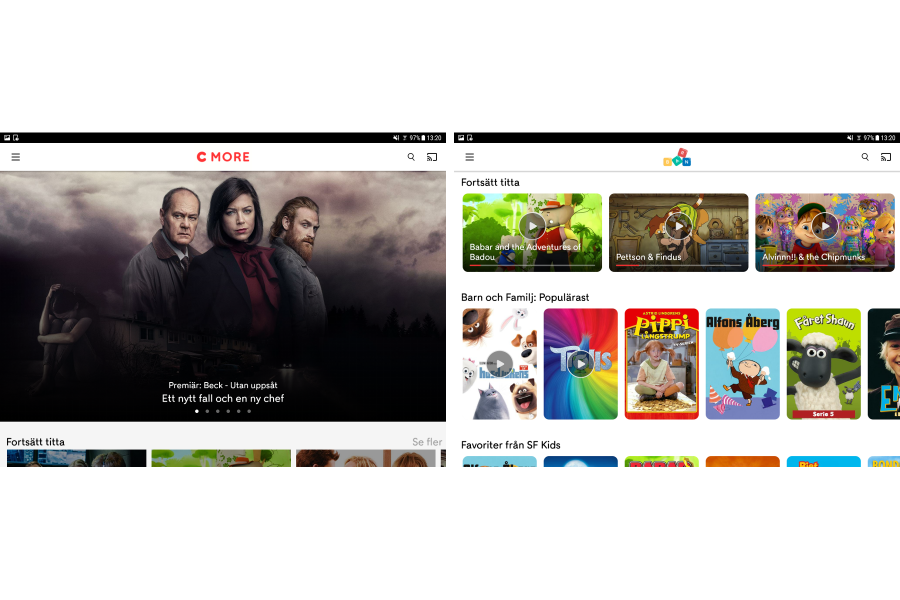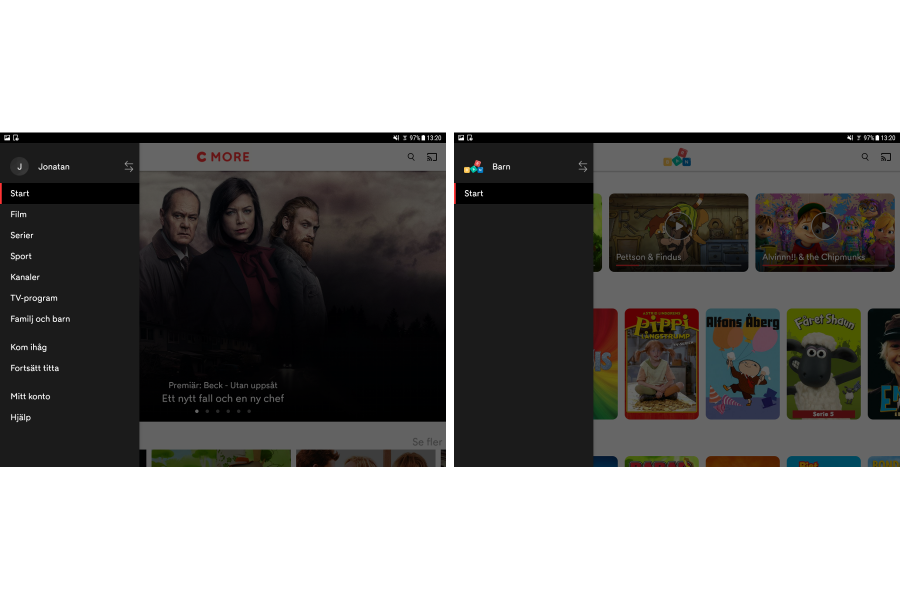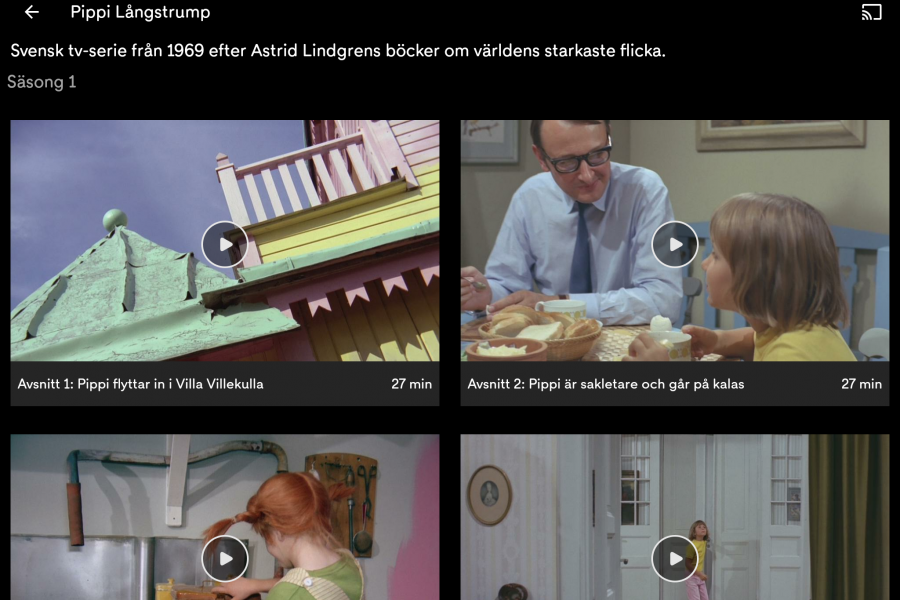Bonnier broadcasting is part of Bonnier Group, the second largest media company in Sweden (after Spotify, with regards to yearly revenue). Bonnier broadcasting owns TV4 — the largest private TV channel in Sweden, and C More — the fastest growing Netflix competitor on the Swedish market. Being a company with the traditions of broadcast TV, it now faces the challenges of digital transformation.
With the goal of making it easier and more attractive to our users that still have a regular TV at home we were assigned the task to design and develop an app for our AVOD-service TV4 Play on Samsung Smart TV.
Product available at
C More on iOS: Apple AppStore
C More on Android: Google Play
Team
- Project manager
- Lead UX designer (me)
- UX designer
- Visual designer
- Digital analyst
- Android developer/tester x 2
- iOS developer/tester x 2
- Player developers x 2
- Backend developer
Approach
Working closely with the project manager, we set up a plan for improving the C More experience for the new target groups: kids and parents. The biggest challenge for us was the lack of a clear strategy from top management with regards to our positioning goals within these target groups. Therefore, we divided the project into two – one that aimed to do some fairly quick and low-hanging fruits, and one that would work with the top management to figure out the long-term strategy. In the strategic project we ran a series of workshops with top management to figure out where they wanted our services to be positioned. We then created a plan for reaching that goal. In the short-term project we:
- Interviewed 10 parents.Through a few quick phone interviews with parents I got an overview of what parents feel about their children’s use of streaming services. Key takeaways were that children are mostly using tablets when they view by themselves, and a list of situations when kids use the tablets.
- Looked at consumption statistics of our kids content.With the help of a digital analyst we got a better understanding of what content is popular and how children’s viewing patterns differ from those of adults.
- Tested the user experience of competitor services with kids.Through a collaboration with a school we performed tests with around 20 kids to see how they use other streaming services. This was the first time for me and my UX colleague to work with kids as users, so it was very fun and inspiring, but also slightly scary.
- Iteratively designed and tested a “kids mode” with kids as well as parents.With the data from interviewing parents, looking at the consumption of our current users and the understanding of kids’ use of our competitor’s services we could easily prioritize and design the most important features for our kids mode. We tested it with around 20 kids through the same school collaboration.
- Set up and executed a launch plan for the kids mode.Because we had seen that most kids content was consumed on iPad we decided to launch on Android first. The prototypes we had tested had their flaws, so through a proper version on Android we could test it fully before finishing the development on iPad.
Personal learnings
This was the first time I worked with children as the target group. It was very interesting because I had to learn a lot on how to perform user research with kids and to be even stricter than usual with the research ethics and methodology. Working with kids between the ages of three and nine, I learnt a lot about how different kids could be at each age. I also learnt the importance of being two people in each test with younger kids, since one person will have to focus completely on keeping the kid focused and happy.



